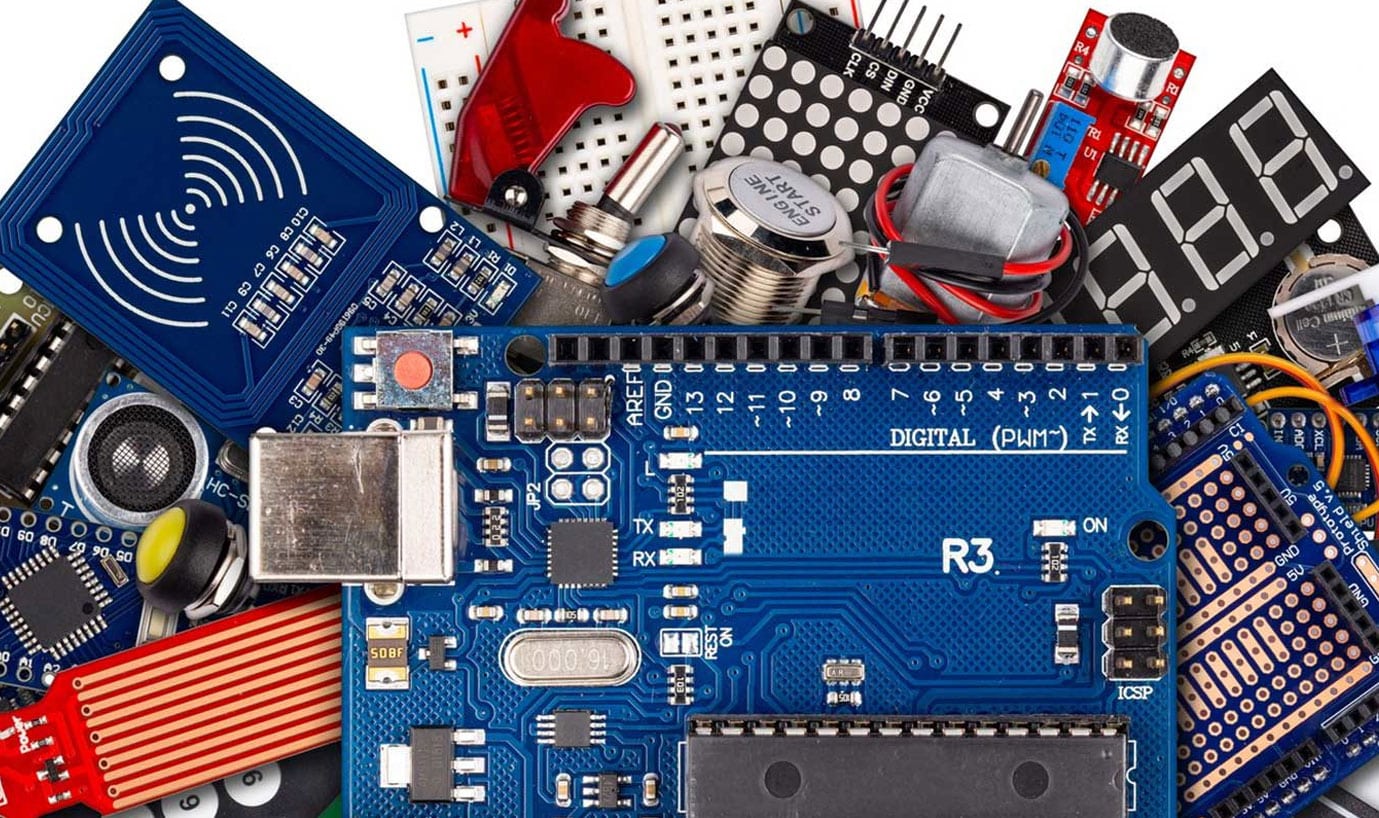Over the last decade, the area of consumer electronics has made considerable progress.
Various smart devices such as cellular phones, air conditioning units, home security features, home theatres, etc., are ready to implement the concept of a smart home.
Of the many benefits that have emerged, you can’t ignore the development and use of smart devices.
These are household items and devices that are typically linked to the Internet and can collaborate to monitor and control all sorts of things at home, including temperature, lighting, safety and entertainment systems. And with continuous progress in this area, it is now completely possible to create your own smart home projects.
One of the popular microcontrollers used for smart home projects by beginners and enthusiasts is the Arduino.
The Arduino Development Board was originally developed at the Interaction Design Institute Ivrea in Italy. Now, this affordable and accessible microcontroller can be found in numerous projects worldwide, from amateurs to professionals.
In this blog, I’ll be discussing the most impressive smart home project that can make your life easier. This will improve the functionality of your real home, whether by controlling the thermostat, conserving energy, or making it easier (and more fun) to switch the lights on or off using a smartphone.
Arduino based Smart Home Automation Projects
There are various types of Arduino boards available such as Arduino UNO, Arduino Mega, Arduino Nano, Arduino Pro Mini, etc., which are used to build small electronic projects.
The powerful feature of Arduino is a great fit for a popular segment of applications – home automation. There is a vast array of home automation applications that we can build using the Arduino board.
Need for Automation
The houses have evolved throughout history, caves with hot fire and illumination, even the torches and candles and finally the arrival of electricity which has allowed to increase the comfort of the house.
Control:
An automated system can replace much of the human workforce. In addition, humans are more susceptible to error while an automated device can operate with diligence, versatility and almost zero error.
Savings:
With all connected electrical appliances that are included to learn about the coolers, lights capable of being activated wirelessly, track electricity retailers as well as heating and cooling water modules that are advantageous in reducing energy and water consumption.
Security:
There are also clear, connected features for the well-being of the smart home that are reasonably estimated choices for every verified security framework.
Safety:
Sensors that are verified and have considered assistance, prevent any occurrence from turning into disasters as they could speak with the owner rightly, on every event you are, wherever you need.
Arduino Board for Home Automation
Arduino is the most common type of device used for home automation.
It is a microcontroller, just like the human brain, it processes information, then it carries out a logical and mathematical operation on this information. Arduino is connected with a Bluetooth module that receives user information. Arduino also links relay, which receives information from Arduino and carries out the operation as a switch. Bluetooth technology is wireless radio transmissions in a short distance delivering the technology needed to create intelligence and controllability. This generates a personal zone network in the domestic environment, where all such devices can be interconnected and monitored using a microcontroller with Arduino using a smartphone. Home automation involves a certain degree of automatic control to relay conductors and then four relays are connected to household appliances.
The modified Arduino with pre-set libraries and changes, transfers to the OFF position when the circuit is activated. The load status is shown on the LCD and the corresponding number is transmitted by the Bluetooth application by receiving the same number in Arduino UNO if a unit is in OFF state. So that the relays are made to HIGH trigger and turn on the unit to re-display the status of the modification of this load on the LCD screen, and the LED blinks because of the forward bias that indicates the supply of home appliances.
The state of the load is shown on the LCD and the corresponding number is transmitted by the Bluetooth application by getting the same number in Arduino if a device is in ON state, so that relays are made to LOW trigger and turn off household appliances.
Conclusion
The home automation system that uses Wi-Fi technology consists of three main components that represent the maintenance of the system care which controls and monitors the user’s in-house and hardware interface module.
The concept of using the Android phone is to control their household appliances from wherever at home.
Nevertheless, this technology solves immobility of disabled people. The home automation system lets appliances turn on and off with the relevant input received from the Bluetooth interface and the status of appliances are shown on the LCD screen by installing the Android app in the user’s smartphone.




